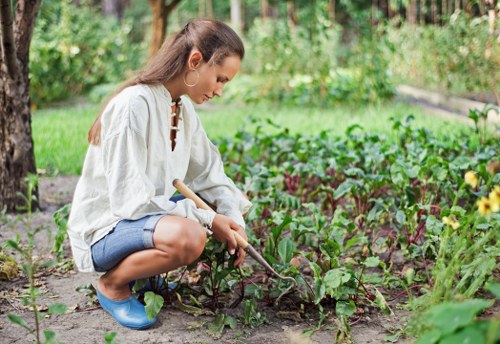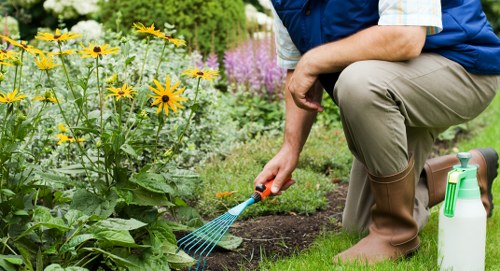Gardeners Poplar: A Comprehensive Guide for Thriving Gardens

The Poplar tree is a favorite among gardeners due to its rapid growth and vibrant presence. Whether you're a seasoned gardener or just starting, understanding the intricacies of Poplar trees can enhance your gardening experience.
Poplars are known for their towering height and broad canopy, making them excellent choices for providing shade and acting as windbreaks. Their versatility allows them to thrive in various climates, making them a staple in many gardens.
One of the main reasons gardeners prefer Poplars is their low maintenance requirements. They are hardy trees that can withstand different soil types and weather conditions, reducing the need for constant care.

Benefits of Planting Poplar Trees
Planting Poplar trees offers numerous advantages for both the gardener and the environment. Here are some key benefits:
- Fast Growth: Poplars are among the fastest-growing trees, providing quick results for gardeners looking to establish a lush green space rapidly.
- Environmental Impact: They play a significant role in carbon sequestration, helping to reduce greenhouse gases.
- Wildlife Habitat: Poplar trees provide shelter and food for various wildlife, promoting biodiversity in your garden.
- Soil Erosion Prevention: Their extensive root systems help in stabilizing the soil, preventing erosion especially in hilly or windy areas.
Additionally, Poplars have aesthetic value, with their beautiful foliage and graceful structure enhancing the visual appeal of any garden.

Types of Poplar Trees for Gardeners
There are several species of Poplar trees that gardeners can choose from, each with unique characteristics:
- Eastern Poplar (Populus deltoides): Known for its large leaves and rapid growth, ideal for large gardens.
- Lombardy Poplar (Populus nigra 'Italica'): Recognized by its tall, narrow shape, perfect for creating natural fences or windbreaks.
- Weeping Poplar (Populus alba 'Italica'): Features drooping branches that add a touch of elegance to any landscape.
- Black Poplar (Populus nigra): Valued for its hardiness and adaptability to different soil types.
- California Poplar (Populus fremontii): Suitable for warmer climates, providing excellent shade and beauty.
Choosing the right species depends on your specific garden needs, climate, and the amount of space available.

Planting and Caring for Poplar Trees
Planting Poplar Trees
To ensure successful planting of Poplar trees:
- Location: Select a spot with ample sunlight and enough space for the tree to grow both vertically and horizontally.
- Soil Preparation: Poplars prefer well-drained soil rich in organic matter. Amend the soil if necessary to improve fertility and drainage.
- Planting Time: The best time to plant Poplars is during the spring or early fall when the temperatures are moderate.
Dig a hole twice as wide and as deep as the root ball, place the tree, and backfill with soil, ensuring the tree is planted at the same depth as it was in the nursery.
Caring for Poplar Trees
Proper care ensures the health and longevity of your Poplar trees:
- Watering: Regular watering is crucial, especially during the first few years. Ensure the soil remains moist but not waterlogged.
- Pruning: Prune annually to remove dead or diseased branches and to shape the tree.
- Fertilizing: Apply a balanced fertilizer in the spring to promote healthy growth.
- Pest Control: Monitor for common pests like aphids and caterpillars, treating infestations promptly.

Common Issues with Poplar Trees
While Poplar trees are generally hardy, they can encounter certain problems:
Diseases
- Poplar Rust: A fungal disease causing orange spots on leaves, which can lead to defoliation.
- Leaf Spot: Causes brown or black spots on leaves, reducing the tree's aesthetic appeal.
Pests
- Aphids: These small insects suck sap from leaves, weakening the tree.
- Caterpillars: Feed on leaves, causing significant defoliation if not controlled.
Early detection and treatment are key to managing these issues and maintaining the health of your Poplar trees.
Local Relevance: Poplar Trees in Nearby Areas
For gardeners living near Poplar, understanding the local environment can help in better cultivation of Poplar trees. Here are some nearby areas with unique features relevant to gardeners:
- Springfield: Known for its fertile soil and ideal climate for growing Poplars.
- Riverside: Offers excellent water resources, essential for young Poplar trees.
- Greenfield: A hub for gardening enthusiasts with numerous nurseries specializing in Poplar varieties.
- Lakeside: Provides a scenic backdrop, allowing Poplar trees to complement the natural beauty.
- Mapleton: Features community gardens where Poplar trees are prominently featured.
- Brookside: Ideal for planting Lombardy Poplars as natural windbreaks.
- Hillview: The hilly terrain supports the deep root systems of Poplar trees, preventing soil erosion.
- Oakwood: Offers a mix of sun and shade, suitable for various Poplar species.
- Pinecrest: The proximity to pine forests creates a balanced ecosystem for Poplars.
- Elmwood: Known for its community workshops on tree care and maintenance.
- Fairview: Celebrates annual Poplar tree festivals, promoting awareness and appreciation.
- Sunnyvale: The sunny climate here accelerates the growth rate of Poplar trees.
- Riverbend: The nearby river provides ample moisture, benefiting Poplar cultivation.
- Meadowbrook: Home to vast meadows where Poplar trees add structure and beauty.
- Willowdale: The gentle slopes are perfect for planting Weeping Poplars, enhancing the landscape.
Conclusion
Poplar trees are a valuable addition to any garden, offering rapid growth, environmental benefits, and aesthetic appeal. By selecting the right species, planting in suitable locations, and providing proper care, gardeners can enjoy the numerous advantages these trees bring.
Whether you're enhancing your garden's beauty, providing shade, or contributing to environmental sustainability, Poplar trees are an excellent choice for gardeners of all levels.
Frequently Asked Questions
1. How fast do Poplar trees grow?
Poplar trees are known for their rapid growth, often adding 3 to 6 feet in height each year under optimal conditions.
2. Are Poplar trees suitable for small gardens?
While Poplars can grow large, certain varieties like the Weeping Poplar are more compact and can be suitable for smaller spaces.
3. What type of soil do Poplar trees prefer?
Poplars thrive in well-drained, fertile soils but are adaptable to various soil types, including loamy, sandy, and clay soils.
4. Do Poplar trees attract pests?
Poplars can attract pests like aphids and caterpillars, but regular monitoring and timely treatments can effectively manage infestations.
5. How do I prevent diseases in my Poplar trees?
Prevent diseases by ensuring proper spacing for airflow, regular pruning, and avoiding overwatering. Using disease-resistant varieties can also help.